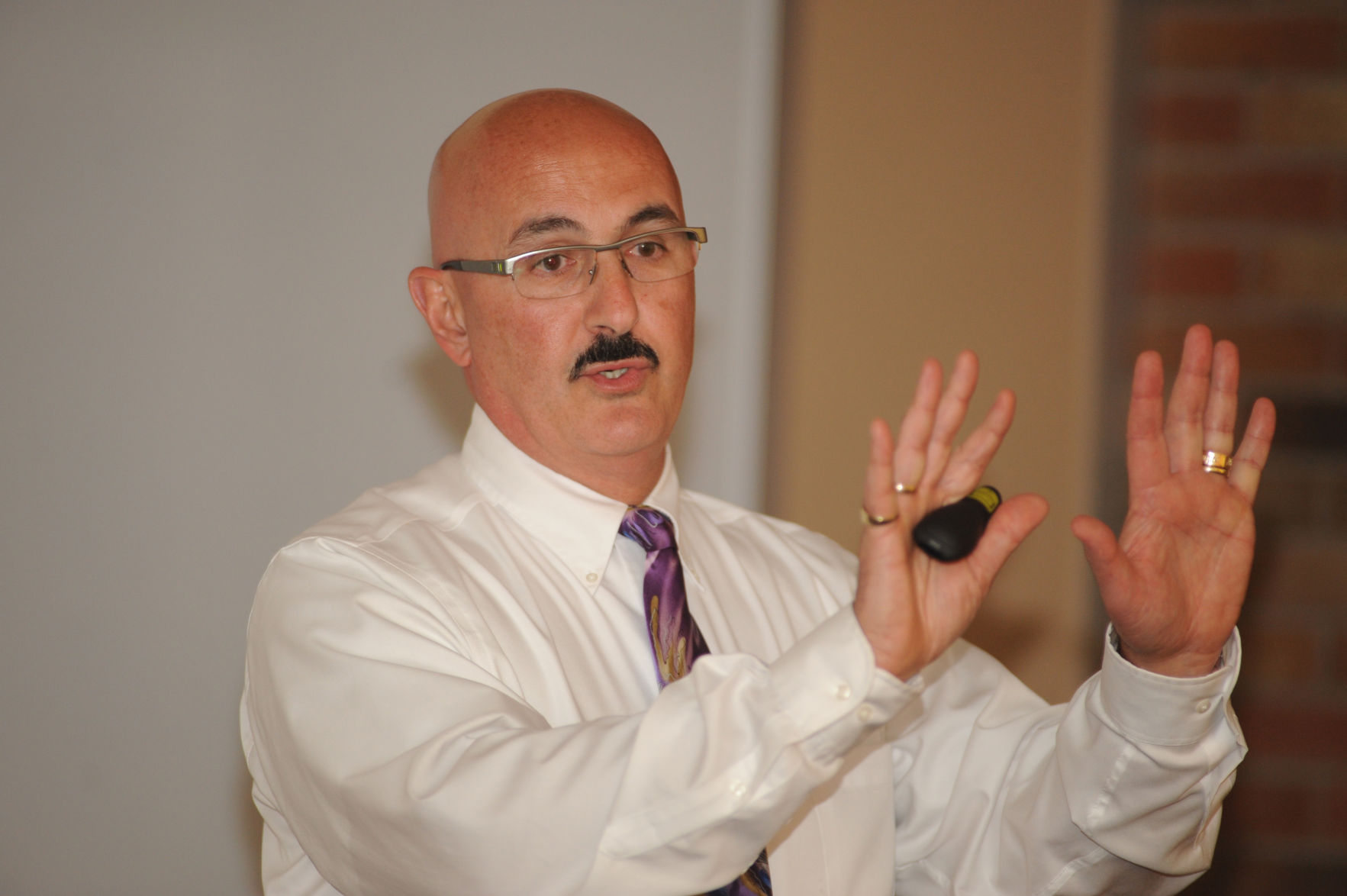
The next step for Bowling Green school facilities is still uncertain, as is when the district will return
with another request of taxpayers.
After a two-hour workshop Monday, the only definitive decision was that the district must do something
about its aging schools.
"If this community supports education, we’re falling short," said Superintendent Francis
Scruci.
Whether to ask for money to only renovate the high school, to only consolidate the elementary, or to only
build new Conneaut and Kenwood elementaries was discussed.
After 18 months of discovery, the plan presented in November was the best option, said board member Paul
Walker. "Our research shows we put the best project on the ballot."
However, board member Bill Clifford added, "If we put the exact same thing (on the ballot), we are
not listening to the taxpayers. As a board we represent the community and the community has
spoken."
The district’s request in November for a 6-mill bond issue to raise $72 million for a new consolidated
elementary plus new construction and renovation to the high school failed by 550 votes.
If the board decides to try again in May, it needs to have all documents filed by Feb. 7. The board will
meet Friday at 7:30 a.m. in the Administrative Office to continue that discussion.
With interest rates going up, "the longer we wait the more expensive it will be," Walker said.
"By waiting, you’re telling people there isn’t a sense of urgency," Scruci added.
With an increase in valuation of the district to $667 million from $633 million, the bond issue would
drop to around 5.6 mills, or $4 per week for the owner of a $100,000 home, said Treasurer Cathy
Schuller. That is a McDonald’s lunch, she added.
During the workshop, the board answered five questions: What went well with the November campaign; what
did they learn from the November campaign; what changes are needed for the next campaign; what to put on
the next ballot; and when to return to the ballot.
Opposition did have an impact on the election results, said Clifford.
A lack of understanding the math and the scope of the projects also was an issue.
"I hope we didn’t assume people knew everything we knew," said board member Ginny Stewart.
"We weren’t asking for more than we needed."
Reducing the scope of the projects, in order to lower the costs, was discussed.
Norman Geer, who joined the board this month, wanted to know if anything could be removed to get the
project into the $60 million range.
The only way to do that is to reduce the number of classrooms in the new elementary from 12 — proposed
for future growth — to 10 or 11. There are currently nine to 10 classes for per grade at the elementary
level, said Scruci.
"We would be crazy if we did that," he said. "There was nothing in this project that was
over the top."
"You don’t want to build for obsolescence," Stewart added.
The extra gym planned at the high school could be scrapped, but that would eliminate the potential for
state tournaments which would bring money into the district, and holding graduation on campus, which
would reduce expenses.
The idea that the district turned down state money is another topic that could have caused people to vote
against the issue.
"People think we turned down state money," said board President Jill Carr.
"We were never eligible for state money," Scruci stated. "I think people thought there was
money on the table. The state did not say ‘here is your 10 percent.’"
The confusion over property assessment versus property value also may have been a contributor, Stewart
said.
"I do believe people didn’t get that."
She would like a document from the auditor’s office circling the amount to use to determine tax amounts.
Voter turnout also was especially low; with 23,774 registered voters in the city limits, only 5,964
turned out, said Scruci.
"The need is great but I think it’s the money," said Geer about why the issue failed.
The idea of replacing Kenwood and Conneaut with new grade-level buildings, to keep neighborhood schools,
also was discussed.
Each elementary would cost about $14 million, Scruci said. But that would double the transportation
costs, and change bus routes every year. That also would not solve the inequity of resources now at the
schools.
The benefit of consolidating was the $100,000 annual savings in transportation — $3.7 million over the
years of the bond — plus the operational savings, Scruci explained. That plus teacher collaboration and
the income potential from preschool and an autism unit was why it was decided that was the best idea.
Renovating the high school would cost about $25 million, but that would be only plumbing, lighting and
electrical.
"Nothing structurally would change," Scruci added. "The bones of our structures are not
there for the long term."
That is the reason why the idea of renovating Kenwood and Conneaut was eliminated.
"We need to do more cause and effect," said Stewart. "We need to convey this is a need,
not a want. We just want to get our schools into the 21st century."
She suggesting a more defined message on the savings of the consolidated elementary, and Walker suggested
a spreadsheet outlining those savings.
"We’re not asking for more than we need. This is bare bones for us," Stewart said.

